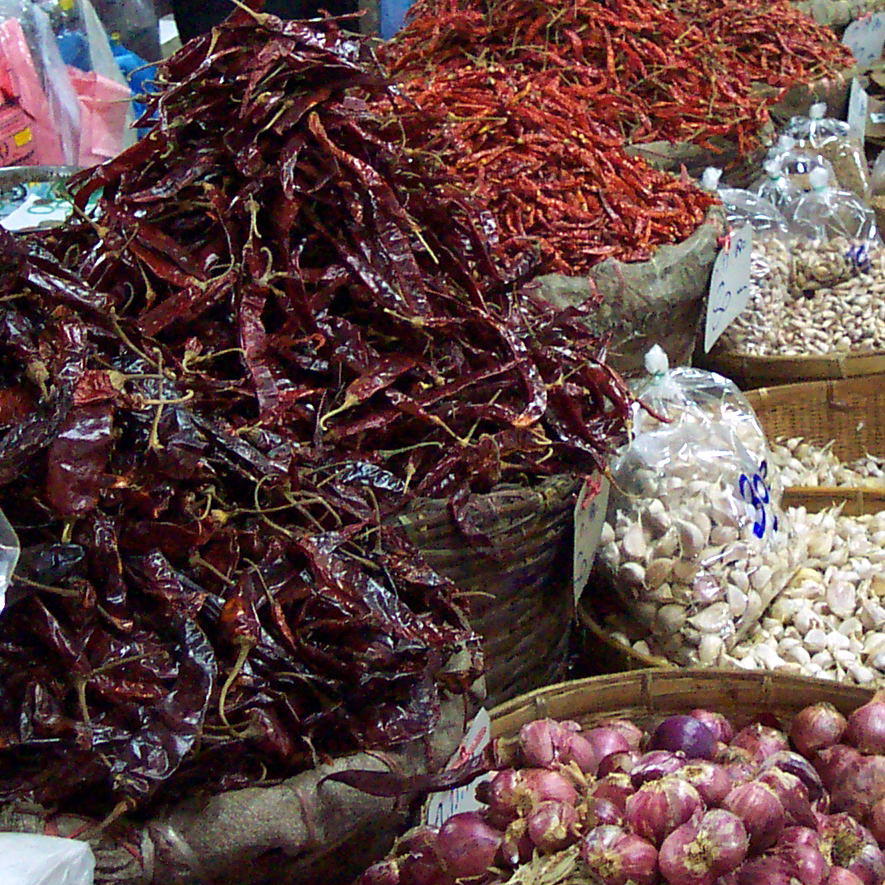Although you may not always see them, dried chilies (prik haeng) are found in a large proportion of Thai recipes, especially in the north. Drying is a traditional way of preserving foods in Thailand that goes way back into the pre-history of the region. Drying is the best way to preserve foods in the humid air of the tropics. It was only natural that the technique was applied to chilies when they were introduced in the 17th century.

When visiting just about any Thai market, you’re bound to see stalls with mounds of dried chillies for sale. The chilies appear in a surprising array of sizes and shades of red. The larger-sized ones are made from fully ripened red spur chilies, while the smaller ones are made from mouse-dropping chilies. The range of colors is mostly due to the degree of ripeness of the fresh chillies. Most cooks advise selecting the darkest red dried chilies for the best taste.
In their dried form, chilies impart a different taste to dishes, which is why some recipes call for one or the other, and sometimes both. Most recipes calling for dried chilies may require that they be soaked in water for a few minutes before use to re-hydrate them. The seeds may also be removed and discarded before use should a less spicy dish be preferred.
You will probably only actually see dried chilies in just a few Thai dishes. In most recipes, they are ground into the curry paste together with other ingredients such as garlic, shallots and lemongrass. Some stir-fries also call for the addition of ground dried chilies, which is also commonly found as a condiment for noodle dishes. You can grind dried chilies in a stone mortar and pestle, or you can find ground dried chilies in Thai supermarkets.